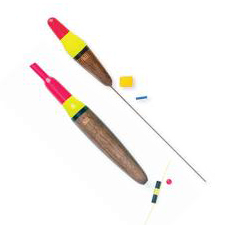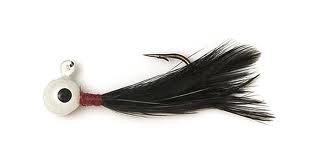 When steelhead begin moving out of the Great Lakes and into the rivers, it’s time to break out your floats and get ready to drift some baits. “It all starts with the salmon, after they move up into the rivers to spawn,” said Jon Ray, a trout, salmon and steelhead specialist from Manistee, Michigan. “The steelhead begin showing up soon after, because of all the roe.”
When steelhead begin moving out of the Great Lakes and into the rivers, it’s time to break out your floats and get ready to drift some baits. “It all starts with the salmon, after they move up into the rivers to spawn,” said Jon Ray, a trout, salmon and steelhead specialist from Manistee, Michigan. “The steelhead begin showing up soon after, because of all the roe.”
Ray lives along Michigan’s Manistee River, which hosts an outstanding fall steelhead run, and from the time the run gets strong, usually around the end of October, Ray fishes almost exclusively for steelhead throughout the winter and much of the spring.
Guide Russ Maddin does likewise, and he noted that the same thing occurs during the fall in rivers all along the Lake Michigan shoreline. “By the second or third week in October, you can target steelhead to some degree in every major river on west side of the state,” Maddin said.
“It’s the power of the roe,” Ray said. “I believe the smell draws them. In late September someone will say, ‘I got one,’ and then the next week someone will get two. Then someone will say, ‘I got six today.’ It just keeps growing.”
Numbers-wise, the steelhead run gets stronger and stronger throughout the fall and winter, with more and more fish pouring into rivers throughout the Great Lakes region. The early season offers a unique appeal, though, because the steelhead are aggressive, having moved in to feed and having not yet been “educated” by fall-run fishermen. They are also brutally strong and fueled up for seriously fast runs and high leaps.
As the season progresses, although ever more steelhead move into the rivers, they also become much fussier. To continue catching fish as fall gives way to winter, anglers must adjust their approaches.
Floats & Eggs
Anglers catch fall steelhead in a variety of ways, but it’s tough to top the effectiveness of dangling the same eggs the steelies are feasting on beneath a Thill float and drifting the bait in front of the fish’s faces. Steelhead, which tend to hold near the bottom in deep, flowing runs this time of year, cannot resist a properly presented salmon egg or egg imitation.
In addition to eggs and egg imitations, Maddin will sometimes use earthworms or waxworms, or he’ll drift jigs, which he’ll tip with waxworms. Ray mostly sticks with eggs and egg imitations. Both anglers use similar drifting strategies with floats whether they are fly-fishing or fishing with spinning or baitcasting tackle.
In one sense, drifting bait under floats is simplicity defined. “When the bobber goes under, set the hook,” Ray said. However, size of the river, the strength of the current, the color of the water, the depth of the runs and the mood of the fish all affect type of float and rig that are best suited for the job.
Because conditions differ from river to river and even from day to day, Ray really appreciates the great variety of well-designed float styles and sizes that Thill offers. He also noted that the float are very well balanced, symmetrically, which is important for making natural drifts and for knowing what’s going on beneath the surface.
 Maddin, who likes middle-sized Thill Turbo Master Floats and Mille Lacs Center Sliders for various river conditions, likes the fact that all are designed for quick and easy depth changes. Depths vary from run to run within any given river, and steelhead stay near the bottom. Therefore, it’s important to be able to change quickly from, say, 6 feet to 8 feet. Depth control is especially important in Michigan rivers, which have a tremendous amount of wood in them, so that offerings can be drifted just over the wood instead of into it, where it would snag.
Maddin, who likes middle-sized Thill Turbo Master Floats and Mille Lacs Center Sliders for various river conditions, likes the fact that all are designed for quick and easy depth changes. Depths vary from run to run within any given river, and steelhead stay near the bottom. Therefore, it’s important to be able to change quickly from, say, 6 feet to 8 feet. Depth control is especially important in Michigan rivers, which have a tremendous amount of wood in them, so that offerings can be drifted just over the wood instead of into it, where it would snag.
Generally speaking, larger rivers, larger offerings and aggressive fish call for larger, thicker floats with more buoyancy. That commonly comes into the play early in the season as the best concentrations of steelhead are often in the larger, lower ends of the rivers, and the fish have not been pressured by fishermen. As the season progresses and single or double eggs become more productive than larger clusters, smaller floats allow for more subtle presentations.
Whenever possible, both Ray and Maddin position themselves upstream of a run and make downstream drifts. “Make short casts and fish straight below you with the rod high,” Maddin said. “It makes it much easier to control your drift in the current.”
Float Rigging
Maddin typically uses one of two basic approaches. For shorter runs and less spooky fish, he’ll use a simple rig with plenty of weight in a single place on the line. That might be a split shot 18 inches up from a hook, or it might be a jig. The idea in this case is to get the bait quickly down to the fish and fishing. For fussier fish or longer runs with more complicated currents, several smaller weights need to be staggered between the float and the hook, with heaviest weight closest to the float.
Staggering the weight, which is often accomplished with 10 to 15 slot, allows an offering to drift directly beneath a float, even in strong and complicated currents, and allows for very natural presentations. The disadvantage, beyond the fact that rigging takes longer, is that these rigs are somewhat awkward to cast.
For either rig, Maddin normally adds a small swivel and 12 to 18 inches of Silver Thread fluorocarbon leader to the business end.
Don’t Forget Jigs

Late in the season, after a temperature drop puts water temps in the mid 30s, Maddin often will trade his eggs and egg patterns for a white 1/64-ounce Little Nipper Jig, which he will tip with a wax worm.
“The eggs are pretty much gone from the rivers, and the jig is something the fish haven’t seen. It can work really well.” Maddin said. “They will break some jigs, but that’s just a steelhead!”
.
